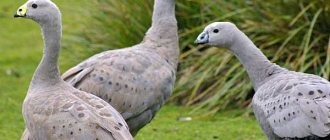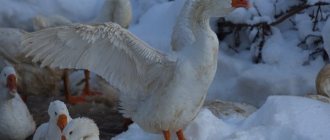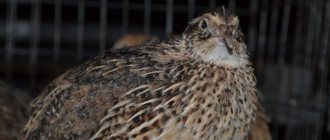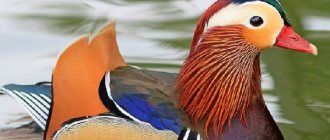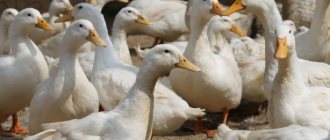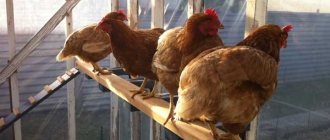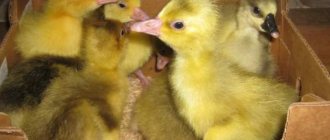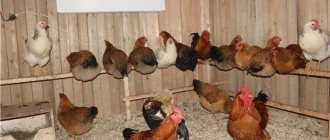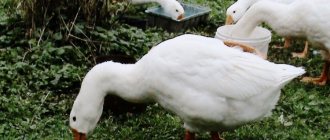Food for poultry should be as nutritious and balanced as possible. For its preparation, a whole complex of various minerals, grains and other ingredients is used. With properly selected food, poultry gains weight well and lays eggs. Good nutrition also improves the immunity of individuals and protects young animals from early vitamin deficiency and mortality.
Poultry food
How much water does poultry need?
Feeding individuals includes not only the distribution of dry or wet food, but also careful sealing. It has been established that at moderate air temperatures, poultry consumes on average about 200 ml of clean water, broiler chickens usually drink no more than 170 ml of liquid. When the air temperature rises to +30 degrees, water consumption increases several times. As soon as the temperature begins to rise, feed consumption drops sharply, which ultimately negatively affects the growth and egg production of poultry. To prevent dehydration or loss of appetite, you need to choose the most comfortable temperature for keeping it, it is +18-+22 degrees.
Attention! The drinking rate for one individual is calculated based on the formula 7.2 liters of liquid per kilogram of feed.
Birds should always have access to water
The best poultry feeds
Good nutrition always has several components. Experienced farmers recommend including the following products in your diet.
Table 1. Best poultry feeds.
| Type of feed | Its feature | Where can I find | Important information |
| Green feed | These products contain a large number of proteins, keratin, antioxidants and vitamins. | Dandelion, alfalfa, fresh grass, carrots | Before serving the poultry greens, they should be chopped well. |
| Cereals | Rich source of protein, fat and carbohydrates | Corn, wheat, barley, rye | The best grain food is corn, which is rich in carotenoids. |
| Mineral additives for industrial production | Rich source of iron, zinc, phosphorus, magnesium and other nutrients | KK-6-2-P, KK-PP-11 and others | Requires careful dosing to avoid oversaturation |
Attention! Industrial feed contains table salt, which can harm birds. Before feeding, you should carefully measure the dose and also read the nutritional composition to avoid purchasing the wrong product.
Corn is suitable for feeding every type of poultry
The best multi-ingredient bird feeds
Multi-component grain mixtures take into account the characteristics of the pet's species and provide a balanced daily diet for your feathered friend.
Fiory Cardellini – for goldfinches
5
★★★★★
editorial assessment
100%
buyers recommend this product
Fiory Cardellini food contains 12 ingredients that imitate the nutrition of forest birds in their natural habitat. The composition includes flax and poppy seeds, chicory, carrot pieces, anise, Abessinian noug and a mixture of cereals.
Special additives include Spanish artichoke and perilla. Goldfinches rarely find these products in nature, which makes them the most valuable components of the composition. Yucca extract is a source of vitamins and minerals.
Buyers note that their pets like the food - they eat the mixture without leaving a trace. The product is sold in convenient cardboard boxes of 350 g.
Pros:
- rich, balanced composition;
- contains vitamin supplements;
- takes into account the peculiarities of the diet of goldfinches in nature;
- sold in many stores.
Minuses:
- expensive (400 rubles per pack).
Fiory Cardellini is a good complete mixture that takes into account the needs of goldfinches. The only thing that stops bird owners from buying is its high price.
Versele-Laga Prestige Canaries – for canaries
5
★★★★★
editorial assessment
98%
buyers recommend this product
Premium grain food for canaries and other small birds has a rich composition. The basis is a complex of cereals and seeds; fruit granules are added to it as a source of vitamins and minerals.
Crushed oyster shells supply the pet's body with calcium and stimulate the stomach. Chia seeds contain fatty acids that are beneficial for songbirds.
Convenient packaging with a zipper prevents the mixture from spilling and protects the grains from moisture and insects. The food is nutritious, consumed slowly - a kilogram bag lasts for several months.
Pros:
- diverse composition;
- many useful additives;
- low consumption;
- Convenient packaging and weighing.
Minuses:
- overpriced (up to 400 rubles per pack weighing 1 kg);
- not available in all stores.
A portion of the proceeds from each package of Versele-Laga food goes to a charitable foundation for the conservation of endangered bird species and their habitats.
Padovan Naturalmix Esotici – for exotic birds
4.9
★★★★★
editorial assessment
92%
buyers recommend this product
Padovan Naturalmix Esotici is a food for year-round feeding of small exotic birds. 81% of the composition is a mixture of sifted Italian and yellow millet. The remaining 19% is occupied by canary grass, flax seeds, and oilseed noug.
The grain is clean and does not generate dust when poured. The birds love the food - they eat the entire portion without leaving a trace. The mixture is sold in sealed bags with a transparent compartment. This allows you to evaluate the quality of the food when purchasing.
Pros:
- thoughtful packaging;
- no large ingredients;
- complete composition;
- affordable price (about 200 rubles per 1 kg).
Minuses:
- not available everywhere;
- no fruit included.
Padovan Naturalmix Esotici is an inexpensive but high-quality food for small ornamental birds.
RIO Wild Birds – for forest birds
4.8
★★★★★
editorial assessment
89%
buyers recommend this product
RIO Wild Birds – food for songbirds. The composition is varied and suitable for daily feeding of feathered pets. The mixture replicates the diet of forest dwellers in their natural habitat.
Seeds of thistle, Abyssinian nougat, perilla and other plants were added to the grain crops. Dried seaweed is a source of fatty acids and vitamins.
When poured, the food does not generate dust, the grains are clean and shiny. You can buy it at most pet stores. The product is sold in opaque 500 g bags without a zip fastener.
Pros:
- pure, without impurities;
- added seeds of wild plants;
- sold in many stores;
- low cost (about 125 rubles per 500 g).
Minuses:
- inconvenient packaging;
- The composition does not indicate the percentage of components.
The bag is difficult to open and the mixture constantly spills out of it. Buyers are advised to immediately pour the food into an airtight container or close the packaging with a special clip.
READ ALSO
12 Best Wet Dog Foods
Rules for feeding hens and chicks
The best option for feeding chickens so that they lay eggs and do not lose body weight is dry feed. But it costs a lot of money and is not always affordable for ordinary farmers. To avoid spending large sums of money, meals can be prepared from whole grains, grain flour, herbs and mineral supplements. It is advisable to alternate these products with each other, which will allow you to maintain an optimal mineral and vitamin balance. For better absorption, the bird should also be provided with access to bowls of water, the temperature of which is approximately +18-+22 degrees. If chickens do not have constant access to food, feed should be provided to them at least three to four times a day.
The diet of individuals in summer and winter should differ in nutritional value. In the cold months, when the temperature does not rise above +10 degrees, there is a deficiency of useful microelements. From May to September, it is recommended to maintain the following ratios of components per 10 chickens:
- grain crops – 500 g;
- well crushed flour – 500 g;
- vitamin hay flour – 100 g;
- solid components – 300-500 g;
- protein feed – 100-150 g;
- crushed bone – 20 g;
- minerals and table salt – 50 g.
Poultry nutrition in winter should be more saturated
When cold weather sets in, chickens are fed per 10 heads according to the following scheme:
- grain crops – 500 g;
- steamed flour – 300 g;
- grated potatoes – 1 kg;
- cakes and meal – 70 g;
- hay flour or dried nettle stems and leaves – 100 g;
- any dairy products – 1 kg;
- crushed bone - 20 g;
- minerals and table salt – 50 g.
When feeding chickens, foods that are difficult to digest should be avoided. In the first ten days from the moment of hatching, they are given a ground egg, which needs to be hard-boiled, soft curd mass, semolina and ground corn. Already on the fifth day, farmers add chicken feed to the diet; it should simply be sprinkled on paper in a small layer. On the fifth to seventh day, farmers introduce chopped greens to the chickens. After three to four weeks, the individuals begin to gradually switch to food for adult chickens. In this case, it is necessary to carefully ensure that the young animals are constantly warm. For the first seven to ten days, chickens are fed every 2 hours, gradually increasing the interval between feedings, bringing it to the usual daily norm.
Price for complete feed Sun for chickens
Sunshine for chickens
Video - Diet for adult chickens
Attention! A good source of vitamins for chicken nutrition is household waste. This includes fish heads, dry bread, egg shells, leftover rice and any other cereals. It is recommended to grind them well and distribute them among the feeders.
Prices for Premix for chickens
Premix for chickens
How to feed birds: five ways
Hanging seed feeders – attract robins, tits, goldfinches, sparrows, greenfinches and siskins.- Mesh Peanut Feeders – Allow birds to only take small pieces of peanuts rather than whole nuts that they might choke on. Such feeders will attract sparrows, starlings, finches and tits. Important to know: Do not use salted or roasted peanuts. Remember that peanuts contain high levels of a natural toxin that can kill birds, so always buy them from a reputable seller who guarantees them to be aflatoxin-free. And also, never put out scattered peanuts in the spring or summer, as they may suffocate when feeding the chicks. Peanuts should only be fed to birds in a mesh feeder.
- Ground and Table Feeding – Birds such as blackbirds, pigeons, robins will not use feeders, preferring to feed from the ground or bird table.
- Edible feeders are as simple as an orange peel or pine cone coated in fat or lard and can be hung from a tree or placed on a platform. They will attract tits, greenfinches and sparrows.
And separately about fruits
Fruit is the food of choice for many birds. As a source of sugar, they are an important source of energy in summer, autumn and winter, key seasons for reproduction, migration and maintaining body heat in low temperatures. Birds can eat many different fruits. In short, all fruits that are good for eating are also good for birds. Although they do eat other species that are not typical human food, such as poisonous berries and spoiled or overripe fruits, which humans definitely wouldn't eat.
The most popular fruits that birds eat:
- Apples
- Cherry
- Elder
- Plums
- Oranges
- Mulberry
- Blueberry
- Raspberries
- Pumpkins
Depending on the bird species, the ripeness of the fruit, and the type of fruit, birds may eat the pulp, drink the juice, or both. On farms and orchards this can be a problem because birds start eating the fruit before it ripens. But in the yard this is a great option. Feeding birds fruit is a good alternative for attracting birds that don't frequent feeders. Fruit can be given in hanging feeders, on platform tables or in wire mesh feeders. Try orange slices, diced fresh fruits such as apples, melons and grapes; or even dried fruits such as raisins or currants.
Quail nutrition
Like chickens, quails should be fed at least three to four times a day. Despite their small weight, individuals of this species require at least 30 g of food per day. At the same time, their feeding differs depending on the purpose for which the quail is raised.
Quails love food made from a mixture of grains, especially corn and peas.
- If we are talking about laying hens, care should be taken that quails receive at least 25-26% crude protein.
- Additionally, pre-crushed eggshells must be added to the feed to improve egg laying.
- When feeding quails for meat, it is necessary to introduce as much grain, flour, peas, and mineral feed as possible.
- It is especially useful for weight gain to mix boiled peas and corn, which are ground after cooking.
- For good results, it is recommended to cook this mixture for no more than 35-40 minutes.
Good nutrition is especially important for laying hens
Regardless of the purpose for which the quail diet is prepared, it must contain specific components.
- Vegetables, among them beets, carrots, cabbage and potatoes are especially useful. They should be pre-boiled and crushed; adult animals can be given raw food, also pre-ground. Vegetables contain a large amount of vitamins, minerals, and nutritional components. Quails easily digest these products, which has a positive effect on egg production and weight gain. At the same time, egg pecking is noticeably reduced.
- Animal products. Cottage cheese and boiled eggs are especially useful for quails. They can be given to adults and young animals, and for better absorption, it is also advisable to pass the food through a sieve or meat grinder. These foods are high in calcium, iron and protein. Egg consumption also has a beneficial effect on the strength of the shell.
- Mineral supplements. For quails, choose chalk, yeast and eggshells.
Video - Feeding quails
Taking into account the age of the quails, the daily diet should be prepared according to the following plan, the calculation is for one head.
Young quails up to 5 weeks:
- 50% crushed wheat;
- 10% chopped corn;
- 15% soybean meal;
- 10% fishmeal;
- 1% fish oil, you can simply grind the fish into cheese;
- 1% mixture of eggshells, soda, salt, mineral additives.
It is recommended to purchase mineral mixtures in stores
Birds from 5 to 6 weeks:
- 35% crushed wheat;
- 35% crushed corn;
- 7% bran feed;
- 10% sunflower meal;
- 2% vegetable oil;
- 5% bone meal;
- 1% fish oil, you can simply grind the fish into cheese;
- 1% mixture of eggshells, soda, salt, mineral additives.
Birds over 7 weeks:
- 35% crushed wheat;
- 10-12% chopped corn;
- 18-20% high protein feed;
- 10% bran feed;
- 10% sunflower meal;
- 5% bone meal;
- 1% fish oil, you can simply grind raw fish;
- 5% mixture of eggshells, soda, salt, mineral additives.
Attention! If you add chalk to the mixture, you can only use food concentrate. It is bought in specialized agricultural stores.
To maintain the growth of quail, they should be fed according to age schemes.
How to feed turkeys?
This bird gains weight quickly and does not require much care compared to other species. Turkeys should be fed according to their age. As soon as they hatch, the chicks are given only clean water for the first 24 hours. For better nutrition, you can add vitamin C to it. After this, turkey poults are transferred to food that contains the following content:
- 68% ground corn and wheat grains;
- 10% bran concentrate;
- 10% ground eggs;
- 10% medium fat curd mass;
- 2% mineral supplements;
Additionally, the food should be enriched with green onions, carrot leaves, and cabbage. All ingredients must be mixed and pureed well so that the turkey poults can easily digest them. In order for individuals to grow well, it is recommended to feed them 8-9 times a day, gradually reducing the number of daily feedings by the first month of life.
Turkey poults, like adults, require green food
After four weeks, meat and fish waste must be added to the feed. Their percentage cannot exceed 5% of the total amount of feed. From two months of age, whole grains are introduced into the diet of turkeys; there is no need to crush it. Gradually, the volume of this component is increased to 50% of the total amount of feed. By three months, individuals should eat no more than four times a day. From three months onwards, a mineral supplement, bran, and sprouted grains are added to the diet. From four months, nutrition becomes complete and includes all products for adult turkeys:
- whole corn 30%;
- soy 30%;
- wheat grains 7–8%;
- sunflower cake 9–10%;
- bone meal 5%;
- crushed chalk and table salt 4% and 0.5%, respectively.
From seven weeks, turkey poults are switched to adult feed.
Bone meal prices
Bone flour
Video - Feeding turkey poults
Carnivores or birds of prey
This group includes birds whose diet consists primarily of the meat of rodents, mammals, fish, insects, other birds, amphibians and reptiles. Birds of prey may hunt their prey or eat dead carcasses. Some carnivorous birds include hawks, falcons, eagles, ospreys, vultures, owls, etc.
Carnivory is a general term used to describe a diet of animal meat, however there is a more specialized diet that requires birds to eat specific types of meat, including:
Piscivores, or ichthyophages
The diet of ichthyophages consists mainly of fish, but may also include aquatic insects, mollusks and crustaceans. Many birds in this category have specialized beaks and strong claws that help them capture their prey. Some bird species that are classified as piscivores include ospreys, terns, cormorants, albatrosses and penguins. Herons, pelicans and gulls are also considered to be partially piscivorous.
Insectivores
Insectivores are various species of birds whose diet primarily consists of insects such as: aquatic insects, flying insects, ants, spiders, grasshoppers, caterpillars, dragonflies, butterflies and many others. These insects are an important source of protein for most birds and especially for young chicks.
There are many birds that are considered insectivores, although they eat more than just insects, as their diet is dominated by these invertebrates. Some species choose to feed exclusively on insects at certain times of the year when other food is not available. Birds that are predominantly insectivorous throughout their lives include bluebirds, dippers, flycatchers, swallows, warblers, woodpeckers and wrens.
Ornivores
The diet of poultry eaters consists mainly of meat from small birds. Both large and small birds of prey can eat other birds. They are agile flyers with strong legs and claws that are capable of catching and holding their prey. Examples of such birds are peregrine falcons and hawks.
Molluscivores
The diet of these birds consists of eating large quantities of shellfish such as snails, oysters, mussels and slugs. Many molluscivores have sharp beaks and strong jaws that help them find and capture prey and crack hard shells. Birds that feed on shellfish include oystercatchers and kites, and occasionally ducks, coots, dippers and spoonbills.
Snake-eaters
The diet of serpent eaters consists mainly of snakes. Such birds have quick reflexes and sharp claws for catching snakes. Snake-eating birds include: the secretary bird, black snake-eater, heron and representatives of the raven family.
Food for ducks and geese
To ensure that these birds gain weight without problems and that there is no significant mortality among them, it is also important to comply with age-specific feeding standards.
Small chicks up to 21 days should be fed a combined feed that contains at least 65% grains, 15% cake and meal, 5-6% minced meat or fish waste, 2-3% yeast, 5% herbs and at least 2% minerals. components.
Attention! If you give oats and barley to ducks and geese, it must be cleared of its membraneous shells.
In addition to good nutrition, ducks and geese should always have access to a small pool
As soon as the chick reaches the age of four weeks, the amount of grain in the diet should be increased by 10%, cake and meal make up 20-30% of the total components, and the amount of minced meat and fish should be halved. From the third month, all geese and ducks are transferred to the diet of adult birds.
The feeding pattern of adults is given below:
- 60-75% mixture of grains, and at least three types of crops should be used;
- 7-10% meal;
- 2% minced meat or fish waste;
- 10% greens, grass, onions, dandelion are suitable;
- 6% mineral supplements.
Young animals should be fed 6-9 times a day, gradually increasing the number of daily meals to 3-4 times.
Video - Feeding geese and ducks
Attention! If the bird begins to shed, feather meal should be added to the mixture.
Poultry Feeding Basics
In poultry farming, feed costs account for about 2/3 of all production costs. Profit is significantly affected by the cost of feed per unit of production, in fattening - 1 kg of weight gain, and in laying hens - per 1 kg of egg mass.
Definition of poultry feed
Ready-made industrial feeds are very common in poultry feeding.
The most important criteria for poultry feed
— crude protein content
– content of essential amino acids (methionine, cystine and lysine)
— metabolic energy content in MJ or kcal
- fiber content. Fiber content is a limiting factor because it determines the degree of digestibility of organic matter in the feed.
— mineral content
— vitamin content
- xanthophyll content. In order for the products to have an attractive appearance to consumers (yellow yolks and yellow masa color), it is necessary to use an appropriate amount of carotenoids
— content of coccidiostatics. For the prevention of coccidiosis
— content of growth stimulants. In industrial intensive poultry farming, the health and productivity of birds can be improved in most cases by the use of growth stimulants.
Feed preparation
Feed can be offered in various forms:
- crushed (do not grind too finely!)
- granular
- expanded
Feeding standards for young animals and laying hens
+recommended use for this period; * - remember the deadline for removal from the body
Feeding standards for chickens and broilers
+recommended use for this period; * - remember the deadline for removal from the body
Detailed feeding standards for laying hens, broilers, turkeys, geese, ducks, pheasants and quails can be obtained in the working files of the course “Feeding standards and rations”
Feeding practice
Laying hens
There are three main feeding methods for raising laying hens:
Feeding method with prepared feed
Ready-made feed is fed. It contains all the necessary nutrients and biologically active substances in the correct quantity and ratio.
Apart from water and shell rock (and if there is additional quartzite on the floor), nothing additional is fed.
At the beginning of egg production, despite the small feed consumption, the bird's nutritional needs must be met. From the 10th month of egg production, less nutritious feed is used.
Depending on the energy content of the feed, the amount consumed may vary. The optimal energy content in feed is considered to be 11-11.5 MJ OE per 1 kg of feed, since a higher energy level increases daily weight gain. This worsens feed conversion (g feed per g egg mass). Feed consumption can also be influenced by changing the light regime.
Typically, laying hens are fed ad libitum. But there are feeding programs in which feed consumption is limited and controlled after the maximum egg mass production in the flock has been reached. This is an opportunity to influence egg weight and improve economic performance due to less feed consumption. The degree of reduction in feeding level is set individually for each flock, based on feed consumption, bird weight (birds should be weighed regularly and should not reduce their weight during the egg-laying period), ambient temperature and egg production. With this feeding method, it is also possible to limit water intake, which will result in drier droppings and less soiled eggs. With this production method, additional investment in feed equipment is required, as well as taking into account the risks associated with the incorrect implementation of this technology.
Feeding the parent flock, perhaps, with the same feed as for laying hens, but with an increased amount of biologically active substances by 30%. Broiler breeder flocks receive less protein and energy because their egg production is lower. Since broiler breeders tend to have high feed intake, they need to be fed according to their performance to avoid obesity.
Combined feeding
Laying hens receive BVMD and shellfish ad libitum and about 50 g of grain once a day.
Phase feeding
This means adjusting the nutritional content of the diet to suit age and productivity.
The egg-laying period is divided into phases (for example, three phases), and the protein content of the feed decreases with decreasing productivity, and the calcium content increases.
Feed consumption per chicken per day is 100-120 g for light hybrids and 120-140 g for medium-weight hybrids.
Chickens growing up (up to 8 weeks of life)
Young animals are fed with ready-made starter feed from the first day of life.
In the first days, food is scattered on the floor (for example, on paper or cardboard), and later in feeders. Water should be freely available at all times, from clean drinking bowls (daily cleaning); when kept on the floor, quartz sand is additionally needed to improve digestion. The total feed consumption per animal is 1.9 kg of starter feed. The weight of 8-week-old chicks from light hybrids is about 630 g.
A bird's development in the first weeks of life is critical to its health and future productivity.
Young laying hens (9-22 weeks of life)
Feeding of young laying hens is carried out with appropriate ready-made feed. This feed is relatively low in energy and rich in protein.
More intensive feeding leads to premature egg production, small eggs and low immunity of the bird.
At the age of 16-20 weeks, the young animals are transferred to a room for egg production and to productive feed.
The total feed consumption for 1 chicken aged from 9 to 22 weeks is about 5.6 kg for light hybrids. At the beginning of the egg-laying period, the bird should weigh 1.5-1.6 kg (avoid excess weight!)
Broilers (until the end of fattening)
Broilers are fed with mixed feed, which is rich in energy and protein and poor in fiber. Feeding can take place either with one type of feed from the beginning to the end of fattening, or with different types (starter, grower and finisher).
When using a starter, it is fed from the beginning of fattening until the middle of the 4th week of life. Then the bird is transferred to the grower, and later to the finisher. Or it is possible to use two types of feed (beginning of fattening and end of fattening). The weight to which poultry is fattened varies greatly and depends on the form in which the meat is sold.
Feed consumption is about 1.8 kg of feed per 1 kg of weight gain for a fattening period of 5-6 weeks.
Feeding turkeys
Granular feed is best suited for feeding fattening turkeys.
To optimally provide birds with nutrients, a 6-phase feed program has been developed for fattening heavy turkeys.
Nutrients and feed consumption in fattening turkeys with a 6-phase feeding program
Feeding geese and ducks
Geese and ducks, both for breeding and for fattening, can be fed with compound feed for fattening broilers.
Geese do not need coccidiostats, and not all coccidiostats are tolerated by geese.
Nutrient content in feed and its consumption for fattening geese
DIY poultry feed
To prepare the feed, the following steps are required; the mixture is prepared for 10 animals per day.
Table 2. Poultry feed recipe.
| Step, no. | Description | Photo |
| Step 1 | Mix barley, millet and oats - 50 g. | |
| Step 2 | Add bran flour to them - 50 g. | |
| Step 3 | After thorough mixing, add boiled carrots and beets to the mixture, and also bring to homogeneity - 50 g. | |
| Step 4 | Be sure to add greens; grated herbs or onions will do - 15 g. | |
| Step 5 | To obtain calcium, be sure to add ground bones and shells - 2 g. | |
| Step 6 | To obtain protein, add minced fish, meat waste, cottage cheese - 15 g to the mixture. Lastly, add a pinch of salt - 0.5 g - to the mixture. |
Quail food
To prepare a complete mixture for ten heads, grind 10 kg of wheat, mix it with 4.5 kg of corn and 1 kg of barley. To make the food as nutritious as possible, add 10-15 ml of sunflower oil, the same amount of bone meal, salt and chalk. This mixture should be given dry or water should be added to it. This amount of formula will be enough for 4-6 weeks, taking into account the feeding schedule.
Ready mix for quails
Turkey feed
To prepare homemade food for turkeys, mix 300 g of corn, 50 g of wheat, add 5 g of chalk and bone meal to the mixture. For nutritional value, 30 g of soybean cake and 10 g of vegetable oil are also added to the feed. The ingredients should be mixed well to obtain the most homogeneous mixture possible. From two months onwards there is no need to grind grains. If such a mixture is introduced earlier, it should be made into a mash so that the chicks do not choke on large grains. To fortify the mixture, add one ground egg and 10-20 g of green onions or herbs.
You should not forget to constantly clean the feeders from the previous food.
